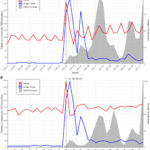Getting a tax refund can be exciting, and after filing your tax return, naturally, you’re eager to know, “Where’s my refund?” Understanding the process and knowing how to track your refund can alleviate anxiety and keep you informed. This guide will walk you through everything you need to know about checking your refund status and what to expect.
Understanding Tax Refunds and Your Entitlement
A tax refund is issued when you’ve paid more in taxes throughout the year than what you actually owe. This can happen through payroll withholdings, estimated tax payments, or refundable tax credits. Even if you didn’t pay income tax, you might still be eligible for a refund if you qualify for certain refundable tax credits like the Earned Income Tax Credit or the Child Tax Credit.
To receive your refund, it’s essential to file a tax return with the IRS. It’s also important to know that you generally have three years from the original tax return deadline to claim a refund. After this period, the unclaimed refund money becomes the property of the U.S. Treasury.
Introducing “Where’s My Refund?” – Your Go-To Tool
The IRS provides a free, user-friendly tool called “Where’s My Refund?” to help you track the status of your federal income tax refund. This tool is available online and via a mobile app, making it convenient to check your refund status anytime, anywhere.
You can start checking your refund status approximately 24-48 hours after e-filing your return or about 4 weeks after mailing a paper return. “Where’s My Refund?” provides information for your most recently filed tax return within the past two years.
How to Use “Where’s My Refund?” Effectively
To access your refund information, you’ll need to provide a few details from your tax return:
- Social Security Number (SSN) or Individual Taxpayer Identification Number (ITIN)
- Filing Status (Single, Married Filing Jointly, Head of Household, etc.)
- Exact Refund Amount (This should be the refund amount you claimed on your tax return)
Ensure you enter these details accurately. The “Where’s My Refund?” tool updates once per day, usually overnight, so there’s no need to check it multiple times during the day.
Refund Timelines: When to Expect Your Money
The IRS aims to issue refunds as quickly as possible. Here are the general timelines you can expect:
- E-filed returns with direct deposit: Most refunds are issued within 21 days.
- Paper-filed returns: Processing times are longer, typically around 4 weeks or more.
- Amended returns: These returns require more processing and can take up to 16 weeks to process.
These are typical timelines, but several factors can influence when you receive your refund. Returns requiring further review, corrections, or those affected by identity theft or fraud might take longer.
Understanding Refund Statuses
“Where’s My Refund?” will display your refund status through three stages:
- Return Received: The IRS has received your tax return and is processing it.
- Refund Approved: The IRS has approved your refund and is preparing to send it.
- Refund Sent: The IRS has sent your refund via direct deposit or mail.
Once your refund is sent, you’ll receive an estimated delivery date. For direct deposits, funds are typically available in your account within 5 business days after the “Refund Sent” date. Paper checks may take longer to arrive via mail.
Choosing How to Receive Your Refund
The IRS offers several convenient ways to receive your tax refund:
- Direct Deposit: This is the fastest and most secure method. You can have your refund directly deposited into your bank account, savings account, or even a retirement account. You can also split your refund into up to three different accounts.
- Paper Check: If you choose this option, a check will be mailed to the address on your tax return. Ensure your address is current to avoid delays.
- Prepaid Debit Card: Some prepaid debit cards accept direct deposits. Check with your card provider for compatibility and the correct routing and account numbers to use.
- Mobile Payment Apps: Certain mobile payment apps also allow direct deposit.
- U.S. Series I Savings Bonds: You can use your refund to purchase Series I Savings Bonds.
Direct deposit is highly recommended for speed and security.
Addressing Common Refund Issues
Sometimes, your refund might not arrive as expected, or it might be different from the amount you anticipated. Here are some common reasons and solutions:
- Refund Amount Adjustment: The IRS may adjust your refund amount if they find errors or discrepancies on your tax return, or if you owe certain debts like back taxes, student loans, or child support. The IRS will send you a notice explaining any adjustments made to your refund.
- Lost or Destroyed Refund Check: If your paper check is lost, stolen, or destroyed, you can request a replacement from the IRS.
- Incorrect Bank Account Information: If you entered incorrect bank account or routing numbers for direct deposit, contact the IRS immediately at 800-829-1040 to try and stop the deposit. If the deposit has already been made to the wrong account, you’ll need to contact your bank to recover the funds.
- Paper Check Instead of Direct Deposit: This can happen if the bank account isn’t in your name, your spouse’s name, or a joint account, if your bank rejects the deposit, or if you’ve requested more than three electronic refunds to one account.
- Refund Received in Error: If you receive a refund you are not entitled to, it’s crucial to return it to the IRS promptly to avoid potential issues.
Need Further Assistance?
“Where’s My Refund?” is usually the quickest way to get updates. If you lack internet access, you can use the IRS’s automated refund hotline:
- Automated Refund Hotline (Current Year Refund): 800-829-1954
- Automated Refund Hotline (Amended Return): 866-464-2050
For detailed information about your specific refund, you can also check your IRS online account.
File your return Pay taxes on time
By utilizing “Where’s My Refund?” and understanding the refund process, you can stay informed and manage your expectations regarding your tax refund. Remember to keep your tax information handy and use the official IRS resources for the most accurate and up-to-date details.


